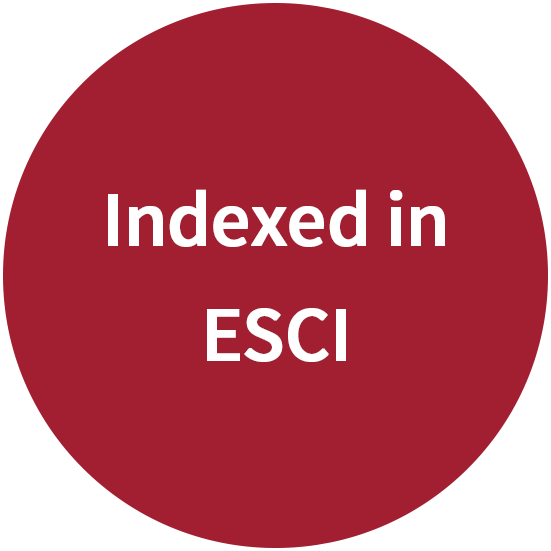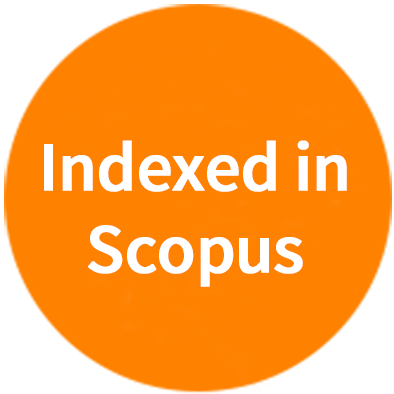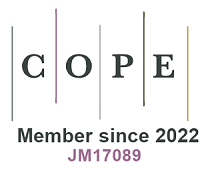REFERENCES
1. What is a rare disease? Available from:https://www.eurordis.org/content/what-rare-disease[Last accessed on 1 Feb 2024].
2. Rode - 2005 - Rare diseases: understanding this public health priority. Available from:https://www.eurordis.org/publications/rare-diseases-understanding-this-public-health-priority[Last accessed on 1 Feb 2024].
3. The power of being counted. Available from:https://rare-x.org/case-studies/the-power-of-being-counted[Last accessed on 1 Feb 2024].
4. Nguengang Wakap S, Lambert DM, Olry A, et al. Estimating cumulative point prevalence of rare diseases: analysis of the Orphanet database. Eur J Hum Genet 2020;28:165-73.
5. Genetic and rare diseases information center (GARD) - an NCATS program providing information about rare or genetic diseases. Available from: https://rarediseases.info.nih.gov/[Last accessed on 1 Feb 2024].
6. Tisdale A, Cutillo CM, Nathan R, et al. The IDeaS initiative: pilot study to assess the impact of rare diseases on patients and healthcare systems. Orphanet J Rare Dis 2021;16:429.
7. Crisafulli S, Sultana J, Fontana A, Salvo F, Messina S, Trifirò G. Global epidemiology of Duchenne muscular dystrophy: an updated systematic review and meta-analysis. Orphanet J Rare Dis 2020;15:141.
8. Angelis A, Tordrup D, Kanavos P. Socio-economic burden of rare diseases: A systematic review of cost of illness evidence. Health Policy 2015;119:964-79.
9. Andreu P, Karam J, Child C, Chiesi G, Cioffi G. The burden of rare diseases: an economic evaluation. Available from:https://chiesirarediseases.com/assets/pdf/chiesiglobalrarediseases.whitepaper-feb.-2022_production-proof.pdf[Last accessed on 1 Feb 2024].
10. Yang G, Cintina I, Pariser A, Oehrlein E, Sullivan J, Kennedy A. The national economic burden of rare disease in the United States in 2019. Orphanet J Rare Dis 2022;17:163.
11. National policy for rare diseases. Available from:https://main.mohfw.gov.in/sites/default/files/Final%20NPRD%2C%202021.pdf[Last accessed on 1 Feb 2024].
12. Richter T, Nestler-Parr S, Babela R, et al. International Society for Pharmacoeconomics and Outcomes Research Rare Disease Special Interest Group. Rare disease terminology and definitions-a systematic global review: report of the ISPOR Rare disease special interest group. Value Health 2015;18:906-14.
13. Orphan Drug Act of 1983. Available from:https://www.govinfo.gov/content/pkg/STATUTE-96/pdf/STATUTE-96-Pg2049.pdf[Last accessed on 1 Feb 2024].
14. Rare diseases. Available from:https://research-and-innovation.ec.europa.eu/research-area/health/rare-diseases_en[Last accessed on 1 Feb 2024].
15. National cancer institute. Definition of prevalence. Available from:https://www.cancer.gov/publications/dictionaries/cancer-terms/def/prevalence[Last accessed on 1 Feb 2024].
16. Rajasimha HK, Shirol PB, Ramamoorthy P, et al. Organization for rare diseases India (ORDI) - addressing the challenges and opportunities for the Indian rare diseases' community. Genet Res 2014;96:e009.
17. Frequently asked questions (FAQs) on new drugs and clinical trials. Available from:https://cdsco.gov.in/opencms/resources/UploadCDSCOWeb/2018/UploadPublic_NoticesFiles/faqnd.pdf[Last accessed on 1 Feb 2024].
18. Dharssi S, Wong-Rieger D, Harold M, Terry S. Review of 11 national policies for rare diseases in the context of key patient needs. Orphanet J Rare Dis 2017;12:63.
20. Rawson NS. Health technology assessment of new drugs for rare disorders in Canada: impact of disease prevalence and cost. Orphanet J Rare Dis 2017;12:59.
21. Song P, Gao J, Inagaki Y, Kokudo N, Tang W. Rare diseases, orphan drugs, and their regulation in Asia: Current status and future perspectives. Intractable Rare Dis Res 2012;1:3-9.
22. Hsiang NC, Huang WF, Gau CS, Tsai TW, Chang LC. The impact of the rare disease and Orphan Drug Act in Taiwan. J Food Drug Anal 2021;29:717-25.
23. U.S. and World Population Clock. Available from:https://www.census.gov/popclock/[Last accessed on 1 Feb 2024].
24. Wagstaff A, Neelsen S. A comprehensive assessment of universal health coverage in 111 countries: a retrospective observational study. Lancet Glob Health 2020;8:e39-49.
25. Hooley B, Afriyie DO, Fink G, Tediosi F. Health insurance coverage in low-income and middle-income countries: progress made to date and related changes in private and public health expenditure. BMJ Glob Health 2022;7:e008722.
26. Seyi-Olajide JO, Ma X, Guadagno E, Ademuyiwa A, Poenaru D. Screening methods for congenital anomalies in low and lower-middle income countries: A systematic review. J Pediatr Surg 2023;58:986-93.
27. Verhaart IEC, Robertson A, Wilson IJ, et al. Prevalence, incidence and carrier frequency of 5q-linked spinal muscular atrophy - a literature review. Orphanet J Rare Dis 2017;12:124.
28. SCN8A Interactive Website. Available from:https://www.scn8a.net/[Last accessed on 1 Feb 2024].
29. About SCN8A. Available from:https://www.thecutesyndrome.com/about-scn8a.html[Last accessed on 1 Feb 2024].
30. CSNK2A1 Foundation. Published research. Available from:https://www.csnk2a1foundation.org/published-research/[Last accessed on 1 Feb 2024].
31. Groft SC, de la Paz MP. Rare Diseases - Avoiding Misperceptions and Establishing Realities: The Need for Reliable Epidemiological Data. In: Posada de la Paz M, Groft SC, editors. Rare Diseases Epidemiology. Dordrecht: Springer Netherlands; 2010. pp. 3-14.
32. Walter AL, Baty F, Rassouli F, Bilz S, Brutsche MH. Diagnostic precision and identification of rare diseases is dependent on distance of residence relative to tertiary medical facilities. Orphanet J Rare Dis 2021;16:131.
33. Rajasimha H. Tackling Rare Disease in India. Available from:https://www.insideprecisionmedicine.com/news-and-features/tackling-rare-disease-in-india/ [Last accessed on 1 Feb 2024].
34. Bhattacharya S, Katoch VM, Majumder PP, Bhattacharya A. Rare diseases in India: current knowledge and new possibilities. Available from:http://insa.nic.in/writereaddata/UpLoadedFiles/PINSA/2016_Art93.pdf[Last accessed on 1 Feb 2024].
35. Christianson A, Howson CP, Modell B. Global report on birth defects. The hidden toll of dying and disabled children. Available from:https://onprem.marchofdimes.org/materials/global-report-on-birth-defects-the-hidden-toll-of--d2unzZI5_VWOaLZnw6iHcx7hbpMWtWzTuIOU3DabcVY.pdf[Last accessed on 1 Feb 2024].
36. Mohanty D, Colah RB, Gorakshakar AC, et al. Prevalence of β-thalassemia and other haemoglobinopathies in six cities in India: a multicentre study. J Community Genet 2013; 4:33-42.
37. Nadkarni AH, Gorakshakar AC, Sawant PM, et al. The phenotypic and molecular diversity of hemoglobinopathies in India: A review of 15 years at a referral center. Int J Lab Hematol 2019;41:218-26.
39. Sachdeva A. Dietary interventions for rare metabolic disorders - now available in India! Indian Pediatr 2017;54:909-10.
40. Verma IC, Lall M, Dua Puri R. Down syndrome in India--diagnosis, screening, and prenatal diagnosis. Clin Lab Med 2012;32:231-48.
41. Kar A, Phadnis S, Dharmarajan S, Nakade J. Epidemiology & social costs of haemophilia in India. Indian J Med Res 2014;140:19-31.
42. IndoUSrare. Rare Disease Organization - IndoUSrare's Global Collaboration. Available from:https://www.indousrare.org/[Last accessed on 1 Feb 2024].
43. Veeramah KR, O'Brien JE, Meisler MH, et al. De novo pathogenic SCN8A mutation identified by whole-genome sequencing of a family quartet affected by infantile epileptic encephalopathy and SUDEP. Am J Hum Genet 2012;90:502-10.
44. Okur V, Cho MT, Henderson L, et al. De novo mutations in CSNK2A1 are associated with neurodevelopmental abnormalities and dysmorphic features. Hum Genet 2016;135:699-705.
45. ICD-10 version:2019. Available from:https://icd.who.int/browse10/2019/en[Last accessed on 1 Feb 2024].
46. ICD-11 for mortality and morbidity statistics. Available from:https://icd.who.int/browse11/l-m/en[Last accessed on 1 Feb 2024].
47. Horn MA, Retterstøl L, Abdelnoor M, Skjeldal OH, Tallaksen CM. Adrenoleukodystrophy in Norway: high rate of de novo mutations and age-dependent penetrance. Pediatr Neurol 2013;48:212-9.
48. Heim P, Claussen M, Hoffmann B, et al. Leukodystrophy incidence in Germany. Am J Med Genet 1997;71:475-8.
49. Wiens K, Berry SA, Choi H, et al. A report on state-wide implementation of newborn screening for X-linked Adrenoleukodystrophy. Am J Med Genet A 2019;179:1205-13.
50. Nalysnyk L, Rotella P, Simeone JC, Hamed A, Weinreb N. Gaucher disease epidemiology and natural history: a comprehensive review of the literature. Hematology 2017;22:65-73.
51. Puckett Y, Mallorga-Hernández A, Montaño AM. Epidemiology of mucopolysaccharidoses (MPS) in United States: challenges and opportunities. Orphanet J Rare Dis 2021;16:241.
52. Malm G, Lund AM, Månsson JE, Heiberg A. Mucopolysaccharidoses in the Scandinavian countries: incidence and prevalence. Acta Paediatr 2008;97:1577-81.
53. Kulas Søborg ML, Leganger J, Quitzau Mortensen L, Rosenberg J, Burcharth J. Establishment and baseline characteristics of a nationwide Danish cohort of patients with Ehlers-Danlos syndrome. Rheumatology 2017;56:763-7.
54. Symonds JD, Zuberi SM, Stewart K, et al. Incidence and phenotypes of childhood-onset genetic epilepsies: a prospective population-based national cohort. Brain 2019;142:2303-18.
55. Ware TL, Huskins SR, Grinton BE, et al. Epidemiology and etiology of infantile developmental and epileptic encephalopathies in Tasmania. Epilepsia Open 2019;4:504-10.
57. Higgins TS, Cohen JC, Sinacori JT. Laryngeal mucous membrane pemphigoid: a systematic review and pooled-data analysis. Laryngoscope 2010;120:529-36.
58. Persson MSM, Begum N, Grainge MJ, Harman KE, Grindlay D, Gran S. The global incidence of bullous pemphigoid: a systematic review and meta-analysis. Br J Dermatol 2022;186:414-25.
59. Mah JK, Korngut L, Dykeman J, Day L, Pringsheim T, Jette N. A systematic review and meta-analysis on the epidemiology of Duchenne and Becker muscular dystrophy. Neuromuscul Disord 2014;24:482-91.
60. Wang J, Gao H, Bao X, et al. SCN8A mutations in Chinese patients with early onset epileptic encephalopathy and benign infantile seizures. BMC Med Genet 2017;18:104.
61. Kong W, Zhang Y, Gao Y, et al. SCN8A mutations in Chinese children with early onset epilepsy and intellectual disability. Epilepsia 2015;56:431-8.
62. Poorthuis BJ, Wevers RA, Kleijer WJ, et al. The frequency of lysosomal storage diseases in The Netherlands. Hum Genet 1999;105:151-6.
63. Poupetová H, Ledvinová J, Berná L, Dvoráková L, Kozich V, Elleder M. The birth prevalence of lysosomal storage disorders in the Czech Republic: comparison with data in different populations. J Inherit Metab Dis 2010;33:387-96.
64. Murila F, Rajab JA, Ireri JM. Gaucher's disease at a national referral hospital. East Afr Med J 2008;85:455-8.
65. Meikle PJ, Hopwood JJ, Clague AE, Carey WF. Prevalence of lysosomal storage disorders. JAMA 1999;281:249-54.
66. Sereni C, Paturneau-Jouas M, Aubourg P, Baumann N, Feingold J. Adrenoleukodystrophy in France: an epidemiological study. Neuroepidemiology 1993;12:229-33.
67. Kridin K. Pemphigus group: overview, epidemiology, mortality, and comorbidities. Immunol Res 2018;66:255-70.
68. Hanany M, Rivolta C, Sharon D. Worldwide carrier frequency and genetic prevalence of autosomal recessive inherited retinal diseases. Proc Natl Acad Sci U S A 2020;117:2710-6.
69. Shourick J, Wack M, Jannot AS. Assessing rare diseases prevalence using literature quantification. Orphanet J Rare Dis 2021;16:139.
70. Şenel E, Demir E, Alkan RM. Bibliometric analysis on global Behçet disease publications during 1980-2014: is there a Silk Road in the literature? J Eur Acad Dermatol Venereol 2017;31:518-22.
71. Mishra RK, Pagada A, Esam H. Diffuse panbronchiolitis research in MEDLINE (1969-2017): report of a bibliometric analysis. Respir Investig 2018;56:312-9.
72. Frigotto ML, Riccaboni M. A few special cases: scientific creativity and network dynamics in the field of rare diseases. Scientometrics 2011;89:397-420.
73. Sweileh WM. Bibliometric analysis of literature on toxic epidermal necrolysis and Stevens-Johnson syndrome: 1940 - 2015. Orphanet J Rare Dis 2017;12:14.
74. Czech M, Baran-Kooiker A, Atikeler K, et al. A review of rare disease policies and orphan drug reimbursement systems in 12 eurasian countries. Front Public Health 2019;7:416.
75. Initiatives by the Government for treatment of rare diseases. Available from:https://pib.gov.in/PressReleasePage.aspx?PRID=1846230[Last accessed on 1 Feb 2024].
76. Chaube P, Singh AK, Choudhury MC. Expansion of India's national child healthcare programme, Rashtriya Bal Swasthya Karyakram (RBSK), for rare disease management : a health policy perspective. Orphanet J Rare Dis 2023;18:145.
77. Smedley D, Smith KR, Martin A, et al. 100,000 Genomes Project Pilot Investigators. 100,000 genomes pilot on rare-disease diagnosis in health care - preliminary report. N Engl J Med 2021;385:1868-80.
78. Sivasubbu S, Scaria V. GUaRDIAN Consortium. Genomics of rare genetic diseases-experiences from India. Hum Genomics 2019;14:52.
79. Nakatsuka N, Moorjani P, Rai N, et al. The promise of discovering population-specific disease-associated genes in South Asia. Nat Genet 2017;49:1403-7.
80. Singh I, Faruq M, Mukherjee O, et al. North and South Indian populations share a common ancestral origin of Friedreich's ataxia but vary in age of GAA repeat expansion. Ann Hum Genet 2010;74:202-10.
81. Venugopal A, Chandran M, Eruppakotte N, Kizhakkillach S, Breezevilla SC, Vellingiri B. Monogenic diseases in India. Mutat Res Rev Mutat Res 2018;776:23-31.
82. Kaur A, Singh JR. Chromosomal abnormalities: genetic disease burden in India. Int J Hum Genet 2010;10:1-14.
83. Serjeant GR. The natural history of sickle cell disease. Cold Spring Harb Perspect Med 2013;3:a011783.
84. Rechtman L, Jordan H, Wagner L, Horton DK, Kaye W. Racial and ethnic differences among amyotrophic lateral sclerosis cases in the United States. Amyotroph Lateral Scler Frontotemporal Degener 2015;16:65-71.
85. Shum BOV, Bennett G, Navilebasappa A, Kumar RK. Racially equitable diagnosis of cystic fibrosis using next-generation DNA sequencing: a case report. BMC Pediatr 2021;21:154.
86. Lachmann RH, Grant IR, Halsall D, Cox TM. Twin pairs showing discordance of phenotype in adult Gaucher's disease. QJM 2004;97:199-204.
87. Di Rocco M, Doria-Lamba L, Caruso U. Monozygotic twins with X-linked adrenoleukodystrophy and different phenotypes. Ann Neurol 2001;50:424.
89. Orphanet report series - prevalence of rare diseases: Bibliographic data. Available from:https://www.orpha.net/orphacom/cahiers/docs/GB/Prevalence_of_rare_diseases_by_alphabetical_list.pdf[Last accessed on 1 Feb 2024].
90. Rushforth A, Yegros-Yegros A, Mongeon P, van Leeuwen T. How does undone science get funded? A bibliometric analysis linking rare diseases publications to national and European funding sources. Available from:https://arxiv.org/abs/1802.05945[Last accessed on 1 Feb 2024].
92. Dickersin K, Chan S, Chalmers TC, Sacks HS, Smith H Jr. Publication bias and clinical trials. Control Clin Trials 1987;8:343-53.
93. Schulman JL. What's New for 2011 MeSH®. Available from:https://www.nlm.nih.gov/pubs/techbull/nd10/nd10_mesh.html[Last accessed on 1 Feb 2024].
94. OpenAI. ChatGPT. Available from:https://chat.openai.com/chat[Last accessed on 1 Feb 2024].
95. FDA issues draft guidances on real-world evidence, prepares to publish more in future. Available from:https://www.fda.gov/drugs/news-events-human-drugs/fda-issues-draft-guidances-real-world-evidence-prepares-publish-more-future[Last accessed on 1 Feb 2024].








